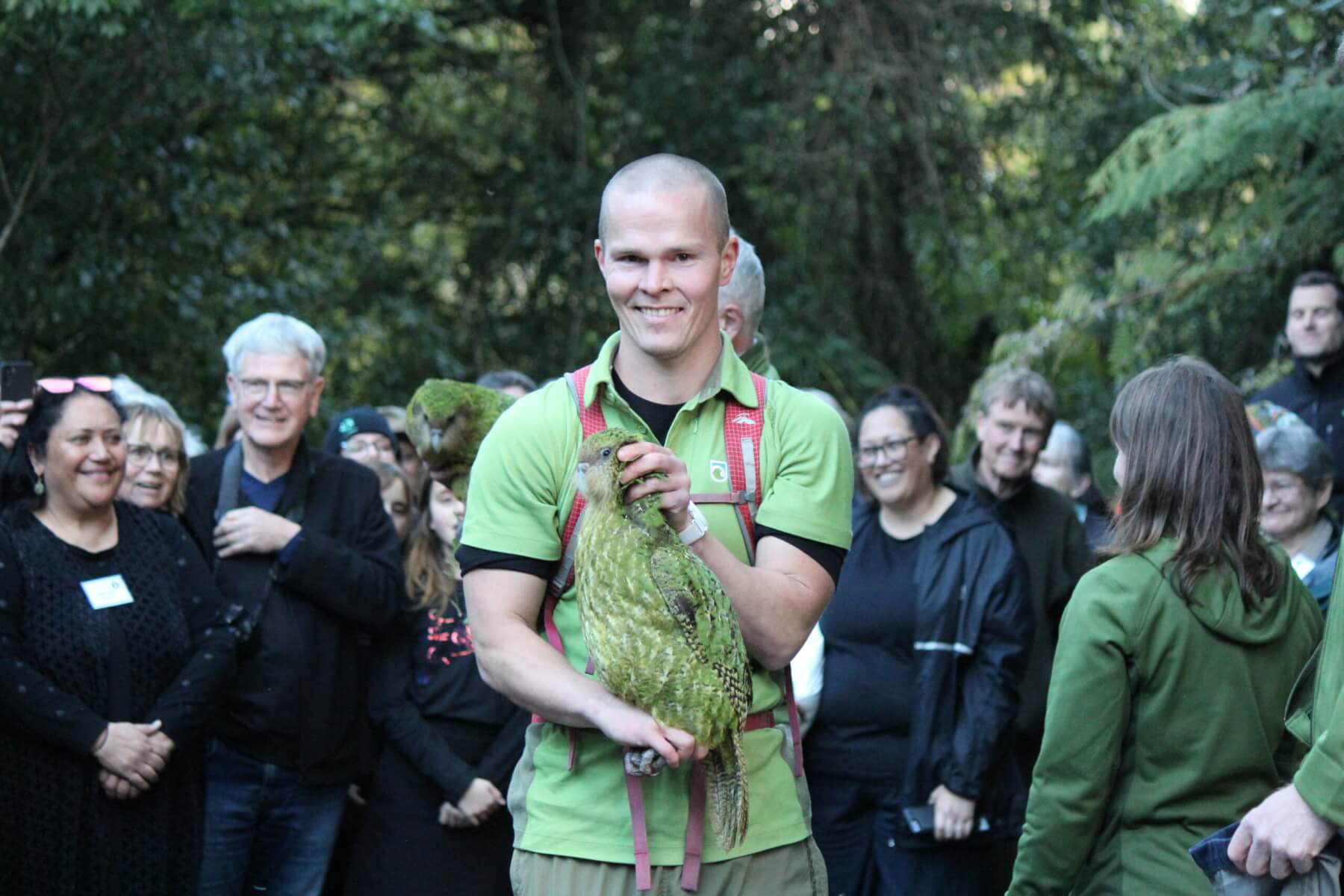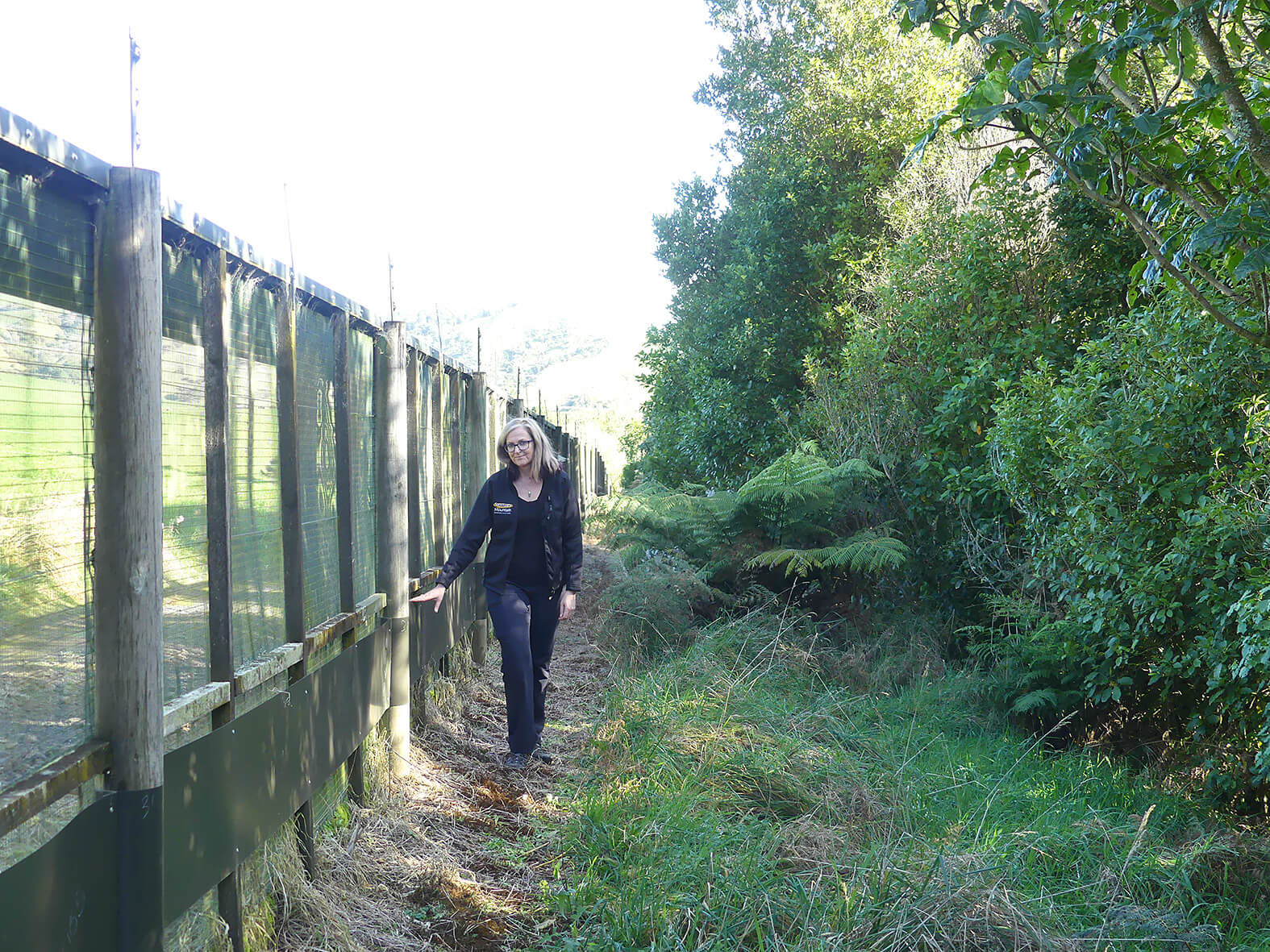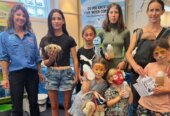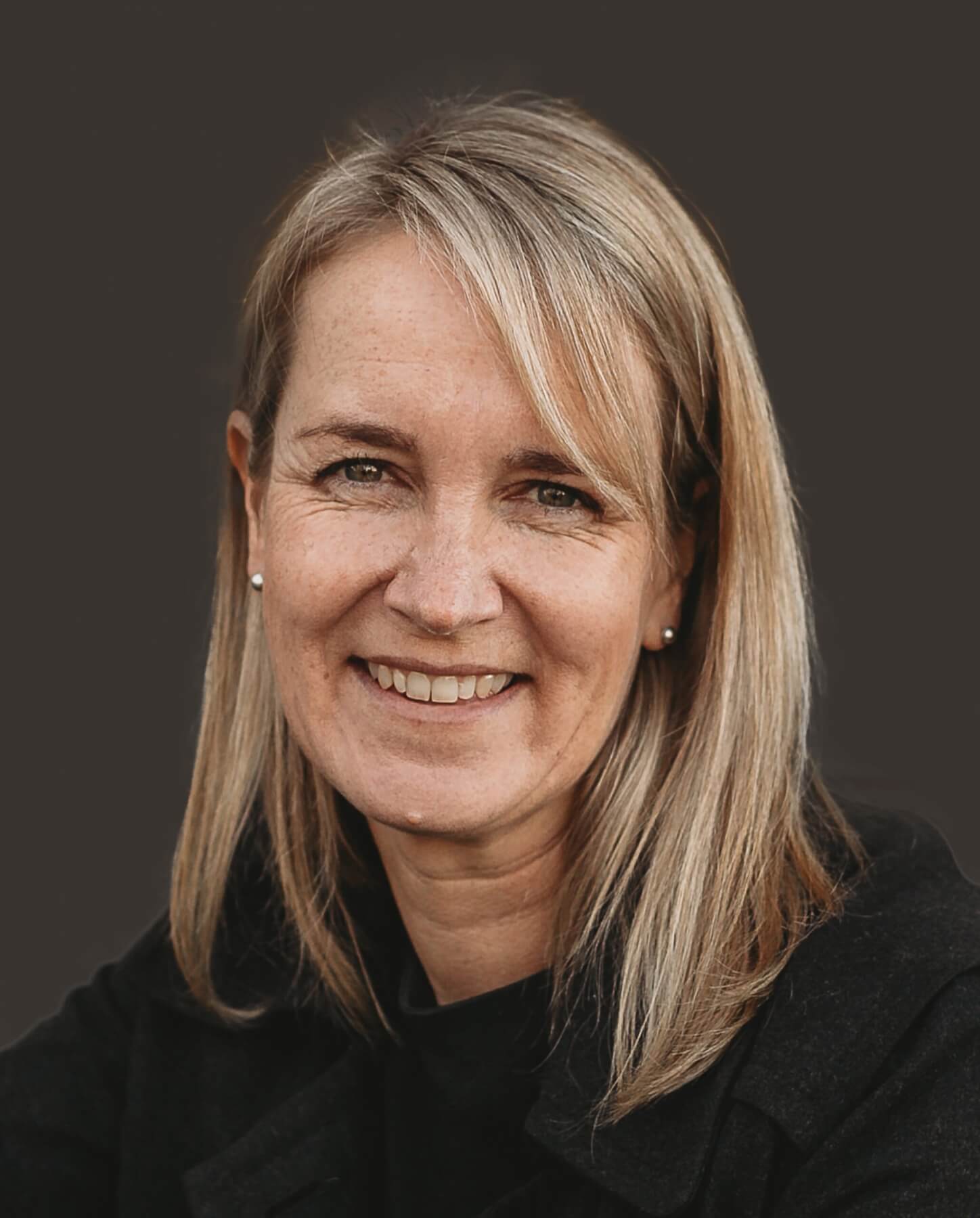
Petrus Hedman, a Doc kākāpō ranger, was proud to show off one of the four arrivals last week. Photo: Roy Pilott.
Every step they take… DoC’s kākāpō “policeman” Petrus Hedman will be watching them.
The newest arrivals at Sanctuary Mountain Maungatautari, four kākāpō from the deep south, will be constantly monitored as they adapt to their new environment.
Hedman, who proudly lifted the first of the four birds for their containers after their arrival at Maungatautari last week, will be doing the job for the next six weeks.
It’s hoped the maunga will eventually become a breeding ground for the endangered native parrot – but first there will be up to 10 males there.
The birds were released on Wednesday last week with no small degree of fanfare. They were flown north after being picked up from Whenua Hou – Codfish Island – as part of an arrangement which involved an iwi to iwi transfer from Ngāi Tahu to Ngāti Koroki Kahukura, Raukawa, Ngāti Hauā and Waikato.
The release followed a pōwhiri and signing of a memorandum of understanding at nearby Pohara marae.

Janelle Ward checks the new barrier which will keep kākāpō in. Installing the barrier around the existing fenceline – in testing weather – took nearly six months and cost about $800,000.
Maungatautari’s Biodiversity team leader Janelle Ward, who featured in The News last week talking about the arrival of the birds, told the gathering at Maungatautari “we can bring species back from the brink of extinction”.
See: Our very own ‘owl parrots’.
She said the arrival of kākāpō had been 20 years in the making. It was the 15th species to be released into the sanctuary – and it would not be the last, she said.
The hand over of the birds – before a gathering of about 100 people – saw two strong speeches from local body politicians.
The number of people attending was almost twice the total population of the kākāpō a little over a quarter of a century ago. Today their numbers exceed 250 and they are rapidly filling up offshore sanctuaries.
Waipā mayor Susan O’Regan, who told of her own family’s love of the Maungatautari project, called on the government to show more support for it.
Waipā District Council had helped fund the project for many years – but it needed more funding certainty from the Government and lamented the fact that many people would not get the opportunity to enjoy the Maungatautari experience.
“No one will protect what they don’t care about; and no one will care about what they have never experienced,” she said, quoting environmentalist David Attenborough.
Waikato Regional Council deputy chair and environmental professor Bruce Clarkson reminded the gathering that the Maungatautari project had also been about saving native flora.
“We’ve achieved massive improvements in habitat quality,” he said.
He listed the tree daisy – kohurangi, which possums had eaten on Maungatautari almost to extinction, the perfumed toropapa and the native clematis, puawhananga, which was showing signs of health in the maunga.
“You have achieved a high quality environment like it was 1000 years ago,” he told Maungatautari staff.
It could be three or four years before female kākāpō are introduced to the sanctuary.
Read: The kākāpō have landed.
Ōtorohanga District Council will debate the future of the district’s water services delivery model at an extraordinary council meeting on April 8, after receiving financial data in the next few weeks. Ōtorohanga councillors will decide… Brad Olsen came to Waipā last week wanting to shake the tag “Bad News Brad” a certain broadcaster has taken to calling him. “I feel like suddenly I can be Good News Brad, at least… Youngsters from around the region enjoyed four hours of fun activities last Saturday at Te Awamutu Museum’s Tui & Tama Eco Expo. The Ecology Expo was the third held as part of the museum’s Tui… This month Good Local Media launches its Local Choice campaign for the local body elections in Waikato Business News and our community newspapers in Cambridge, Te Awamutu and King Country. We’ve got six months to…
More Recent News

Councils prepare for water decision

Economy shifts gears

Eco expo a success

The race is on





